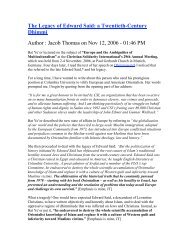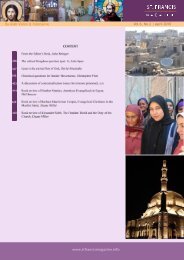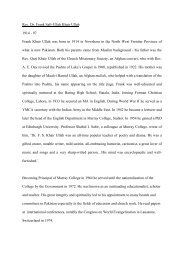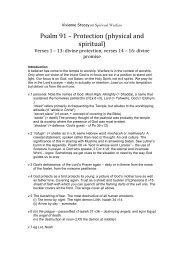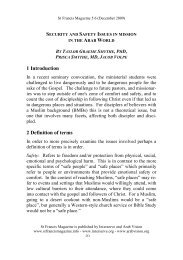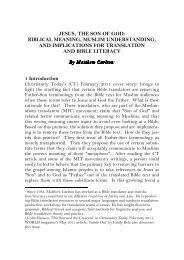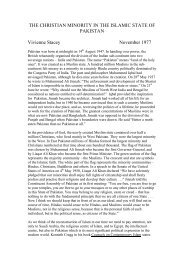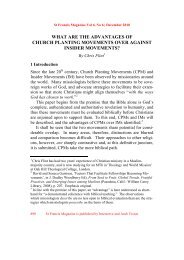Untitled - St.Francis Magazine
Untitled - St.Francis Magazine
Untitled - St.Francis Magazine
You also want an ePaper? Increase the reach of your titles
YUMPU automatically turns print PDFs into web optimized ePapers that Google loves.
<strong>St</strong> <strong>Francis</strong> <strong>Magazine</strong> Vol 8, No 2 | April 2012 1877 when war broke out with Russia. At times like that, additional taxes could be imposed and active men conscripted into the Army, thus putting pressure on a small rural community’s ability to survive. Contrastingly, by this latter part of the 19 th century, the region west of the Jordan appears more stable and settled, due no doubt to greater connections to the trade routes around the Mediterranean, its more developed infrastructure, and its greater preponderance of established cities and communities. Moreover, its landscape and centres were already being eagerly visited, mapped and described by the many Western Christians fascinated by biblical connections that could illuminate their own sense of divinely ordained origins. As a result, a variety of European nations would often compete in the establishing of a range of amenities of education and healthcare available to the local population as part of their struggle to establish precedence for their particular religious or national identity. It was natural, therefore, that the Anglican Church should be found first in places like Jerusalem and Nazareth, with schools, as we have seen, set up by Bishop Gobat in places like Nablus, Ramleh, and Lydd – all west of the Jordan. The establishment of Gobat’s school in Salt in the late 1840’s is the exception to this, of course, though the Bishop’s continuing anxiety over its future expressed in the years that followed its opening is understandable. Only after Ottoman administration had been established in Salt could that city become one of the permanent hubs of Anglican activity east of the Jordan. It was matched only at that time by the attempts to secure a centre at ElHusn, Irbid, or Ajlun to serve the scattered group of village schools in the Hauran region that have been mentioned before. From this, one would expect that most of the Arab Anglicans appointed to ministry in the early days were to be found serving in the area west of the Jordan and only gradually spreading across to the eastern bank – and this is indeed what we find. This will be noted in the instances of most of the six brief 301


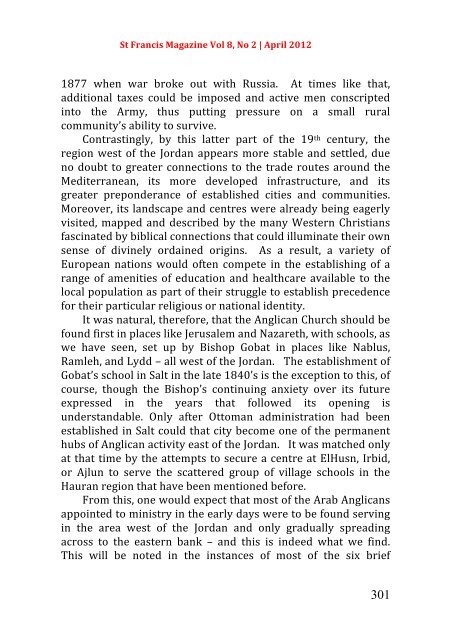

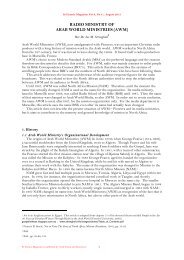
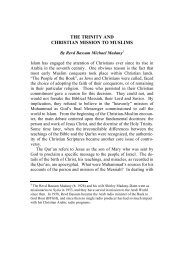
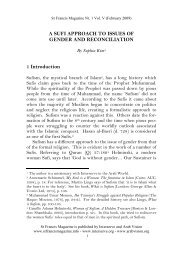
![Reflections on Surah Fatiha and the Lord's Prayer[1] - St.Francis ...](https://img.yumpu.com/49377951/1/184x260/reflections-on-surah-fatiha-and-the-lords-prayer1-stfrancis-.jpg?quality=85)
